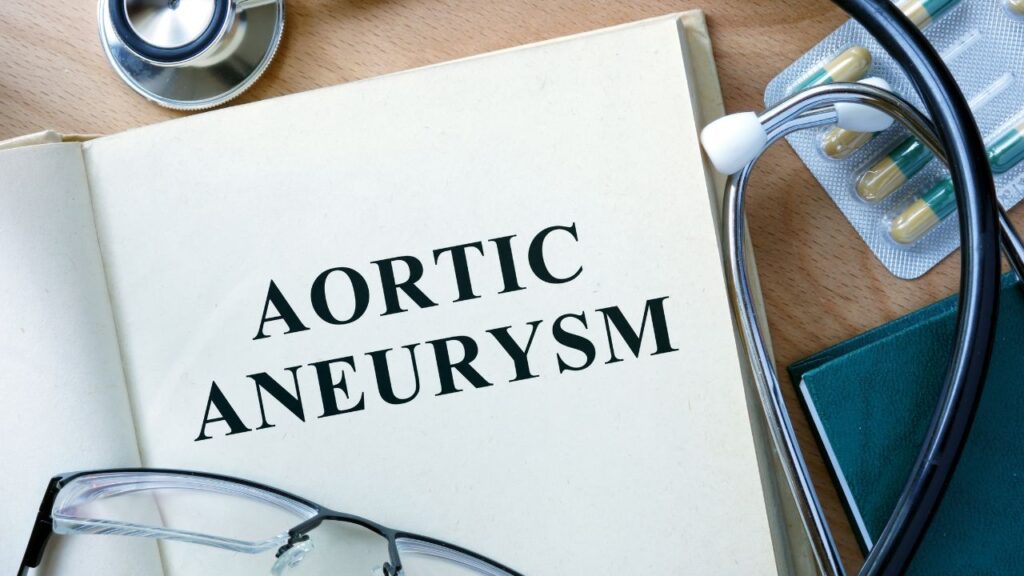Timely diagnosis and meticulous management are crucial for conditions like aortic aneurysms (AA) in order to prevent life-threatening complications. Recent advancements in AI have completely transformed the approach to AA care, both in the realm of thoracic aortic aneurysm (TAA) and abdominal aortic aneurysm (AAA), resulting in significant improvements in patient outcomes.
In this article, we will delve into the advantages of AI-enhanced AAA patient care at Yale New-Haven Health, the impact it has on diagnosis and disease awareness, and the process of implementation within healthcare systems. The information shared here is based on a webinar featuring Edouard Aboian, MD, Vascular and Endovascular Surgeon, and Uwe Fischer, MD, Vascular and Endovascular Surgeon, both from Yale New-Haven Health.
1. The Benefits of AI-Enhanced AAA Patient Care
AI brings immense value in bringing AAA patients to the attention of physicians, but its benefits extend beyond that. Consider patients who come into a healthcare system for an unrelated acute issue and have their AAA incidentally detected during a CT scan for other reasons. This is where AI has truly made a difference in the discovery and management of AAA. The key benefits include:
- Early and Accurate Detection: AI can pinpoint enlarged areas of the aorta and flag potential aneurysms with precision, whether through imaging or analyzing radiology reports. Early detection is critical in AAA care to initiate a surveillance plan or prompt timely intervention if necessary.
- Automated Alerts and Follow-Ups: AI systems can automatically notify healthcare providers about critical findings based on user-set thresholds, speeding up treatment for acute cases and ensuring that subacute patients do not fall through the cracks. This improves clinical outcomes, follow-up adherence, and reduces the risk of missed diagnoses.
- Efficient Workflow Integration: AI seamlessly integrates into existing workflows, facilitating quicker decision-making and streamlining patient management processes.
2. Impact on AAA Disease Awareness and Management
Dr. Fischer and Dr. Aboian shared valuable insights on how AI has influenced the AAA diagnosis process at Yale, as well as overall disease awareness and patient management.
AI-Assisted AAA Management
Prior to AI implementation, managing AAA patients involved multiple steps that often led to delays and missed follow-ups. A radiologist would identify an aneurysm on a CT scan, triggering a manual notification to the ordering physician. However, many patients were lost to follow-up due to this cumbersome process.
With AI, the system now automatically scans CT images for enlarged abdominal aortas. If an aneurysm is confirmed, a notification is sent to the healthcare provider, prompting immediate action. This streamlined approach ensures that patients are promptly referred to vascular surgery for further evaluation and management.
The integration of AI resulted in significant enhancements in AAA treatment at Yale, as evidenced by two research studies:
The initial study documented their early experience, revealing that during a 5-month period:
- 446 patients with aortic aneurysms were identified, with 188 patients having aneurysms larger than 4cm.
- 24% of these aneurysms >4cm were newly diagnosed, underscoring the role of AI in uncovering previously undetected cases.
The subsequent study focused on using AI for the initial assessment and follow-up of AAA patients (and compared the results to the pre-AI era):
- The percentage of relevant patients receiving follow-up consultation within 6 months of the initial imaging increased from 18% to 42% post-implementation.
- The average time from initial imaging to clinic evaluation decreased from 83 days to 22 days.
- The proportion of patients with long-term follow-up scheduled rose from 65% to 99%.
- The mean time to repair following initial imaging dropped from 270 days to 58 days post-AI.
3. Implementation Process of AI at Yale for AAA Care
According to Drs. Fischer and Aboian, the integration of AI into a healthcare system involves several crucial steps and is a gradual process:
- Initial Setup and Team Formation: Establishing a dedicated team to oversee the AI integration process is essential. This team ensures that all necessary protocols and governance structures are in place.
- Algorithm Training and Validation: AI must be trained and validated using historical data to ensure accuracy and dependability.
- Integration with Existing Systems: AI should seamlessly integrate with current electronic health records (EHR) and imaging systems to facilitate efficient data flow and alert generation.
- Continuous Monitoring and Adjustment: Regular monitoring of AI performance and making necessary adjustments guarantee optimal functionality and accuracy.
The Future with AI for AA Care
The incorporation of AI into AA care represents a significant leap forward in healthcare delivery. By enhancing disease awareness, streamlining patient management, and ensuring timely intervention, AI has the potential to enhance patient outcomes and even save lives. As highlighted by Drs. Fischer and Aboian, the journey with AI is just beginning, and its impact on AAA at Yale showcases the transformative power of technology in patient care.
For healthcare systems contemplating the adoption of AI, the benefits are clear:
- A more efficient approach to managing complex conditions
- Improved follow-up management and patient retention
- Enhanced patient outcomes
By embracing AI, we can pave the way for a future where advanced technology enhances patient care and ultimately their well-being.
Click here to view the full webinar, “Transforming Aortic Aneurysm Patient Care”


